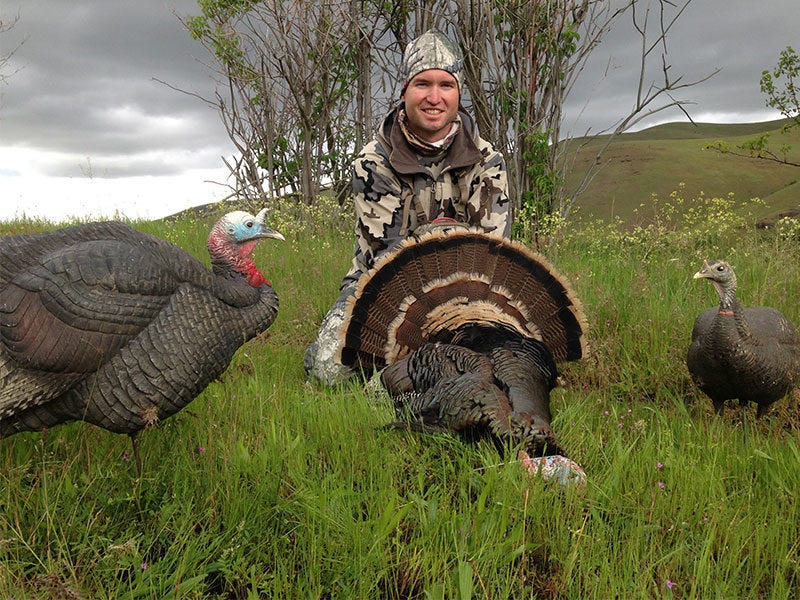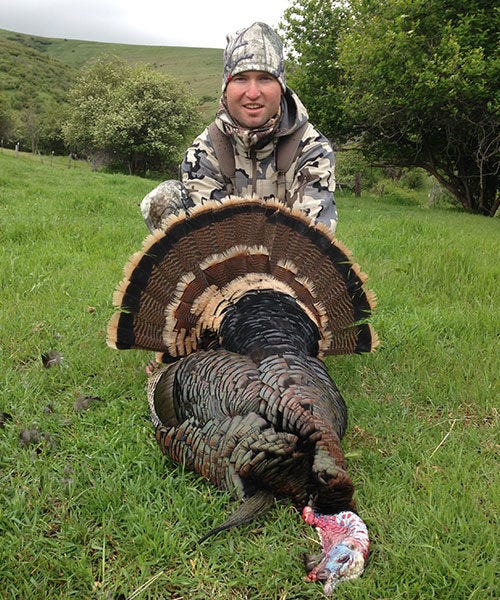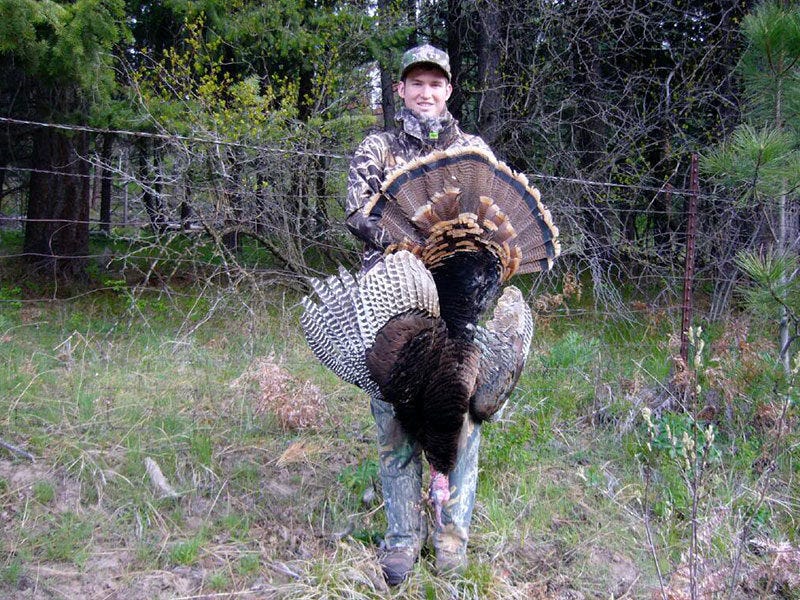Turkey Hunting Tactics For Beginners


Excitement grows as I leave my pickup in the darkness. I try to be stealthy as I feel my way through the dark woods and somehow navigate my way into the area I had scouted weeks before.
Anticipation is high as I sit waiting for the first light to start breaking over the horizon. As it gets light enough to make out the trees around me, I hear the first toms sound off from a nearby roosting tree.
As it gets closer to fly down time, I give a quick hen yelp on my call which is immediately answered by the thundering gobble of a nearby tom. I live for mornings like this.
Knowing Turkey Behavior
One of the most unique things about turkeys is that they sleep in trees. Every evening they will feed towards a tree they like to sleep in (roost tree), and fly up into it before dark. They will spend the night there. As it gets light in the morning, the birds begin to sound off while in the trees to locate each other.
Near sunrise, the birds will fly to the ground and will stay on the ground until sunset unless spooked. Male turkeys are known as gobblers. They make a loud sound called a "gobble" in order to impress and locate females. Mature gobblers are referred to as Toms, and young ones are Jakes. Females are called Hens and make a yelping noise to give their location away to gobblers.
Elk Tactics for Turkeys
Spring turkey hunting is similar to hunting rutting elk. Male turkeys make a distinctive gobbling sound in an effort to attract females and establish dominance, much like a bull elk. This makes them vulnerable, for the simple reason, in that they give away their location.
A great tactic is to set up close to a known fly down area in the morning, and hen call to try and get a gobbler to come in. Setting up early on gobblers is a great tactic because they haven't usually met up with hens yet. Just like a bull elk with a harem of cows, it's hard to call a gobbler away from real hens.
Need a turkey call? Check out our selection.
If you are unfamiliar with the area you are hunting or haven't located any turkeys, cover ground at first light and try to hear a gobbler sound off. As you cover country, stop in places and call to see if a gobbler responds. Believe it or not, crow calls or owl hoots will also get gobblers to answer.

If you find one or hear one, sneak in as close as you can and begin hen calling. Beware, these big birds can come in completely silent so I would give each set up some time before moving on. I like to carry a single hen decoy to set out when calling. This gives a wise old Tom something to look at while he is coming into shotgun range, and keeps the focus off you. If you can, set up where the bird will be out of sight until he is in shotgun range.
This can be done by setting up on the opposite side of a hill or a ridge that he has to come over to see where the "hen" is calling from. When calling, sit down against a tree and rest your shotgun on your knees. If a bird comes into range, wait until he goes behind some brush and then you can slowly shoulder your gun.
Looking for the right decoy? Browse decoys here.
Gear you Need to Hunt Turkey
Turkeys have incredible eyesight. My grandfather used to tell me they can see through a ¼" sheet of plywood. This is obviously an exaggeration but you get the idea. Good camouflage is a must when hunting turkeys. I also wear a face mask and gloves to keep everything concealed. There are a variety of calls out there, I prefer diaphragm calls.
Diaphragms are harder to use at first, but let you call without moving giving you an advantage when the turkeys are close. For a starter call, I would recommend a slate call or a box call. They are relatively easy to use for a beginner to get you in the game. Any shotgun will work, but you will want a full choke with turkey loads for ammunition.
Turkey loads are typically lead shot, 3" magnum shells with shot size ranging from 4-6. Keep shots under 40 yards and aim for the base of the head. I like carrying a small fanny pack or backpack just for calls, gloves, facemask, headlamp etc.
Searching for the best gear? Check out our camouflage.
Safety Considerations when Hunting Turkey
The combination of being in full camouflage and using decoys makes turkey hunting a leader in hunting accidents. One must always be sure of their target and what's beyond it, especially hunting public lands. Sneaking on a Tom can be a great tactic for mid-day call shy birds, but you have to make sure the backdrop is clear if you are able to get in range. A little common sense and using basic hunter safety rules will keep you and others safe.

Where to Find Turkeys
In Montana, we have the Merriam subspecies of turkeys. They inhabit a wide variety of terrain. River bottoms make up a large portion of turkey habitat, but they live in the mountains as well.
The Montana Fish Wildlife and Parks website has a great map that shows turkey distribution throughout the state.
Here's the keys to killing turkeys.
Look at these maps and then look at the regulations as some areas are limited entry and tags must be obtained through a draw process. The FWP recently changed the system and hunters can now kill up to 9 turkeys in a year, if they travel the state and have some luck in the draws. There's no shortage of opportunity out there.
